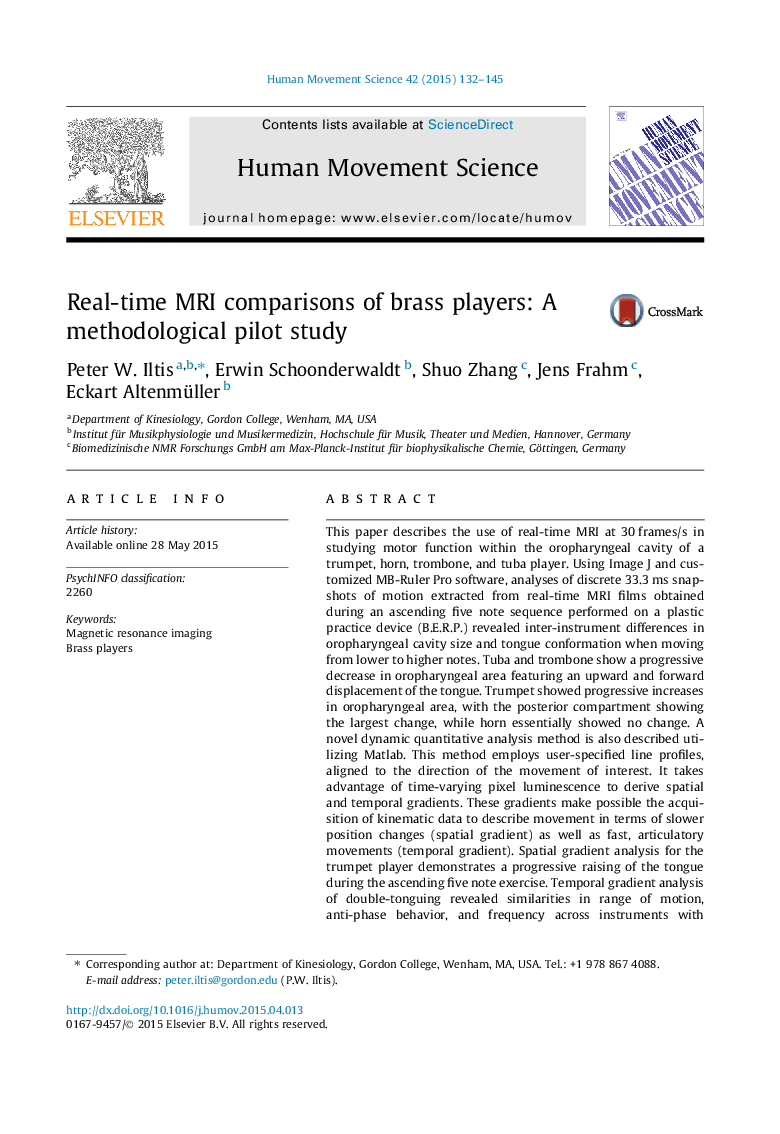| Article ID | Journal | Published Year | Pages | File Type |
|---|---|---|---|---|
| 928236 | Human Movement Science | 2015 | 14 Pages |
•Real-time MRI is used to compare tongue movements between brass instrumentalists.•Varying between-instrument strategies are used to execute the same performance tasks.•Novel methods for obtaining quantitative, dynamic information from MRI are described.•Suggestions for applying these methods to study musician’s dystonia are made.
This paper describes the use of real-time MRI at 30 frames/s in studying motor function within the oropharyngeal cavity of a trumpet, horn, trombone, and tuba player. Using Image J and customized MB-Ruler Pro software, analyses of discrete 33.3 ms snapshots of motion extracted from real-time MRI films obtained during an ascending five note sequence performed on a plastic practice device (B.E.R.P.) revealed inter-instrument differences in oropharyngeal cavity size and tongue conformation when moving from lower to higher notes. Tuba and trombone show a progressive decrease in oropharyngeal area featuring an upward and forward displacement of the tongue. Trumpet showed progressive increases in oropharyngeal area, with the posterior compartment showing the largest change, while horn essentially showed no change. A novel dynamic quantitative analysis method is also described utilizing Matlab. This method employs user-specified line profiles, aligned to the direction of the movement of interest. It takes advantage of time-varying pixel luminescence to derive spatial and temporal gradients. These gradients make possible the acquisition of kinematic data to describe movement in terms of slower position changes (spatial gradient) as well as fast, articulatory movements (temporal gradient). Spatial gradient analysis for the trumpet player demonstrates a progressive raising of the tongue during the ascending five note exercise. Temporal gradient analysis of double-tonguing revealed similarities in range of motion, anti-phase behavior, and frequency across instruments with respect to movements of the tongue tip and back of tongue. The paper concludes by making recommendations for extending these methods to studying musician’s dystonia.
